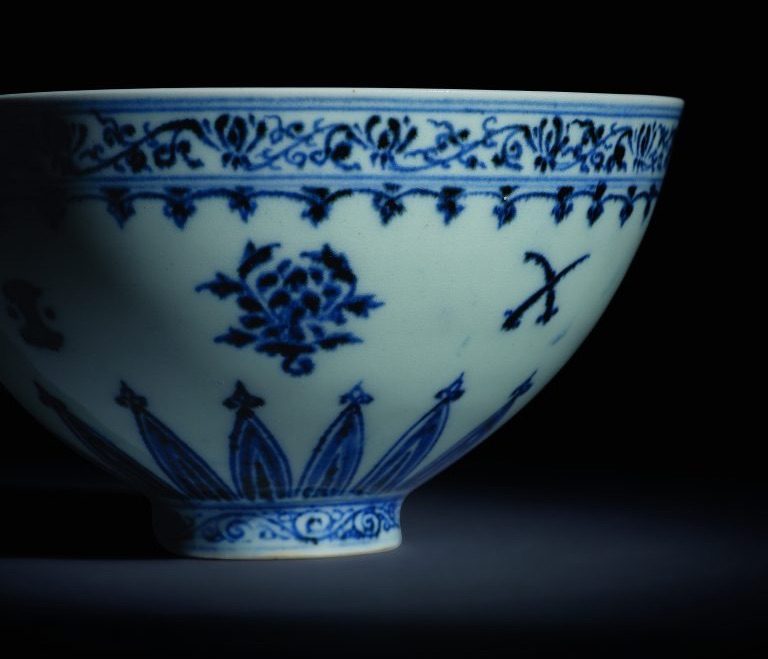Image: An exceptional and rare blue and white ‘floral’ bowl, Ming dynasty, Yongle period
Stories of great finds at flea markets and yard sales are the stuff of art market legend. But some finds come about by skill, quick instincts and a great eye. Others are a matter of blind chance.
Illustrating the latter, for example, a painting in a gilded frame was bought for $4 at a flea market in Pennsylvania in 1989. On the back of the frame was an envelope, and inside it was a folded-up copy of the Declaration of Independence. The buyer discarded both the painting and the frame as ugly and worthless. As for the folded-up document, he kept it as a curiosity. Surely it wasn’t an original, he thought.
But he was wrong.
For it turned out the document was one of 200 or so copies of the fabled Dunlap broadsides, printed on the evening of July 4th, 1776, and of which only 24 copies were still known to exist. David Redden, the specialist from Sotheby’s who first saw it, knew right away it was authentic, describing it as “an unspeakably fresh copy.” In the ensuing frenzy of bidding at its eventual sale in 1991 the document brought $2.4 million. In 2000 it appeared again at auction, this time bought by the television producer Norman Lear for $8.14 million.
But what about those discoveries where the treasure is hiding in plain sight? It is sitting out on a table, say, at a yard sale and glimpsed by many passersby, priced to sell and just waiting to be discovered. This was the case with the charming little blue-and-white porcelain bowl (pictured above) that someone spotted at a yard sale in Connecticut in 2020 and purchased for $35.
This discerning individual seems to have immediately recognized something extraordinary in the bowl. He took it to Sotheby’s. There it was more formally identified as a Ming Dynasty era bowl made for the Yongle Court and dating to the 15th century. Moreover, only six companion pieces were known in existence, all in world-famous institutions such as the British Museum, the Victoria & Albert Museum and the National Palace Museum in Taipei.
Think about it.
This exquisite little bowl, decorated with floral images of great delicacy and lush colors, manufactured in China in the 1400s for Imperial use and showing barely any signs of wear or damage, somehow surfaced hundreds of years later as an item lumped in with unwanted household furnishings perhaps collected from the attic, the basement and the garage and modestly priced for quick sale as part of that great American suburban ritual, the yard sale.
Just try to imagine the journey of this bowl through the centuries—how it left China, who bought and sold it, where it was displayed or stashed away, what pleasure it brought to the eyes of countless admirers—and then remember that it wound up as a household castoff. It might well have gone on to someone else’s attic or basement if not for the astute, eagle-eyed person who bought it and then had its rarity and value confirmed by experts.
Suddenly, it was on the big stage where it belonged.
And so, offered for sale during Asia Week at Sotheby’s in March 2021 and estimated at a robust but realistic $300,000-500,000, and with a four-person bidding war driving the price ever higher, the little blue-and-white bowl plucked from the yard sale in Connecticut brought $721,800. As a Sotheby’s representative commented so aptly afterwards, “Today’s result epitomizes the incredible, once-in-a-lifetime discovery stories that we dream about as specialists in the Chinese art field.”
Oh, the stories this little bowl could tell . . .

